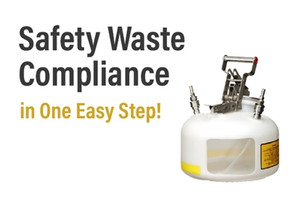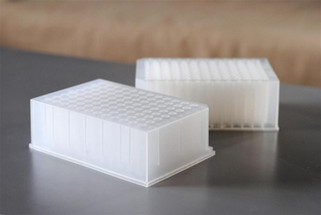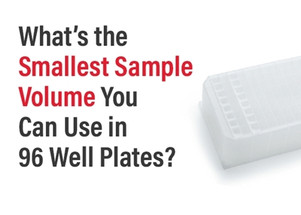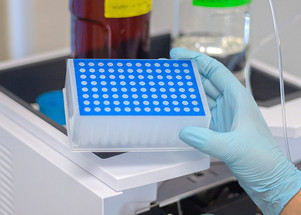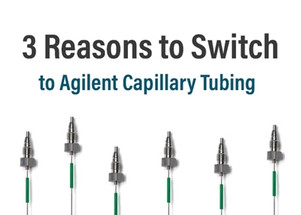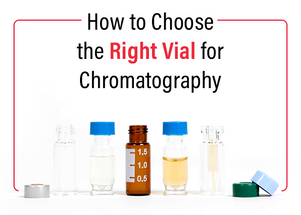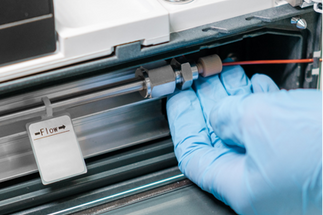Posted by Chrom Tech on 11th Dec 2025
Blog
Posted by Chrom Tech on 11th Dec 2025
EHS Compliance: Safely Manage HPLC Solvent Waste
Posted by Chrom Tech on 11th Dec 2025
How Do You Dispose of HPLC Waste?
Posted by Chrom Tech on 20th Nov 2025
ASK BEN | How to Choose an HPLC or GC Syringe
Posted by Chrom Tech on 20th Nov 2025
Increase Accuracy and Time Savings in Cannabinoid Analysis Sample Preparation
Posted by Chrom Tech on 20th Nov 2025
What Is the Difference Between UHPLC and HPLC?
Posted by Chrom Tech on 20th Nov 2025
How to Choose the Right Septa for Your Autosampler Vial Closure
Posted by Chrom Tech on 20th Nov 2025
Discover the Best Agilent Vial Caps
Posted by Chrom Tech on 17th Nov 2025
The Benefits of Glass Well Plate Inserts
Posted by Chrom Tech on 17th Nov 2025
The Different Types of Well Plates: Polypropylene and 96 Well Plates With Glass Inserts
Posted by Chrom Tech on 17th Nov 2025
Using 96 Well Plates In High Throughput Laboratories
Posted by Chrom Tech on 17th Nov 2025
What is the Smallest Sample Volume You Can Use in 96 Well Plates?
Posted by Chrom Tech on 17th Nov 2025
Which 96-Well Plate Should I Use for LCMS?
Posted by Chrom Tech on 17th Nov 2025
The Different 96 Well Plate Bottom Shapes
Posted by Chrom Tech on 17th Nov 2025
Vials vs. 96-Well Plates for Chromatography
Posted by Chrom Tech on 12th Nov 2025
Essential Guide to Gas Chromatography Vials
Posted by Chrom Tech on 12th Nov 2025
Measuring Gas Flow for Gas Chromatography
Posted by Chrom Tech on 7th Nov 2025
How to Choose Agilent Supplies Wisely
Posted by Chrom Tech on 7th Nov 2025
Three Reasons You’ll Want to Switch to Agilent Capillary Tubing
Posted by Chrom Tech on 7th Nov 2025
When to Change your HPLC Piston Seal
Posted by Chrom Tech on 7th Nov 2025
Reduce PFAS Background Interference and Contamination
Posted by Chrom Tech on 7th Nov 2025
Essential HPLC Accessories for Liquid Chromatography
Posted by Chrom Tech on 7th Nov 2025
Capillary Tubing Selection Guide for Agilent HPLC Systems
Posted by Chrom Tech on 6th Nov 2025
Which Type of Glass Vial is Best for your Application?
Posted by Chrom Tech on 6th Nov 2025
When to Use High Recovery Vials
Posted by Chrom Tech on 6th Nov 2025
EPA Recommended HPLC Vial Wash Procedures
Posted by Chrom Tech on 6th Nov 2025
Essential Guide to GC Headspace Vials
Posted by Chrom Tech on 6th Nov 2025
How to Choose the Best Storage Vials
Posted by Chrom Tech on 6th Nov 2025
Getting to the Bottom of Vial Inserts
Posted by Chrom Tech on 6th Nov 2025
How To Choose the Right Vial for Chromatography
Posted by Chrom Tech on 6th Nov 2025
What are the Benefits of Glass Vials in the Laboratory?
Posted by Chrom Tech on 6th Nov 2025
Essential Guide to Autosampler Vials
Posted by Chrom Tech on 5th Nov 2025
What’s the Difference Between a 1.5 mL and 2.0 mL Autosampler Vial?
Posted by Chrom Tech on 28th Oct 2025
Agilent HPLC Parts Finder Tool: Simplify Ordering Genuine Replacement Parts
Posted by Chrom Tech on 28th Oct 2025
Find Genuine Agilent Supplies & Parts Easily
Posted by Chrom Tech on 28th Oct 2025
History of Chromatography: From Past to Present
Posted by Chrom Tech on 28th Oct 2025
Syringe Filters for HPLC Sample Preparation: A Guide to Choosing the Right Filter for Consistent and Accurate Results
Posted by Chrom Tech on 28th Oct 2025
What Is Endcapping in HPLC Columns
Posted by Chrom Tech on 28th Oct 2025
How To Regenerate a C18 HPLC Column
Posted by Chrom Tech on 28th Oct 2025
How Does Column Temperature Affect HPLC Resolution?
Posted by Chrom Tech on 28th Oct 2025
Can you recommend the best brands for 96 well plates?
Posted by Chrom Tech on 28th Oct 2025
What Causes Peak Tailing in HPLC?
Posted by Chrom Tech on 28th Oct 2025
Gas chromatography column and supplies
Posted by Chrom Tech on 28th Oct 2025
Liquid Chromatography Columns and Supplies
Posted by Chrom Tech on 28th Oct 2025
Everyday Applications of Chromatography
Posted by Chrom Tech on 28th Oct 2025
A Complete Guide to Syringe Filters: How They Work and How to Use Them
Posted by Chrom Tech on 28th Oct 2025
Ultimate Guide to Liquid Chromatography Principles
Posted by Chrom Tech on 22nd Oct 2025

